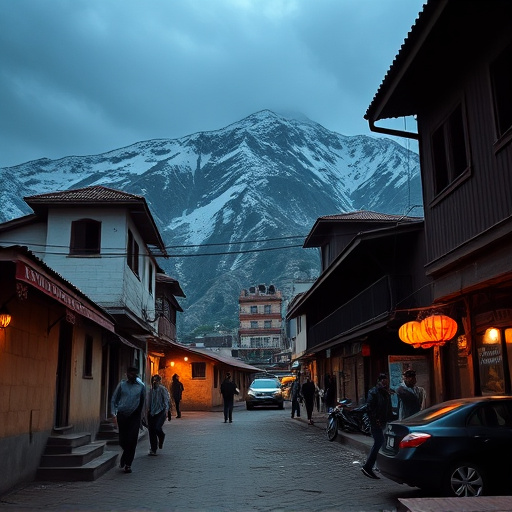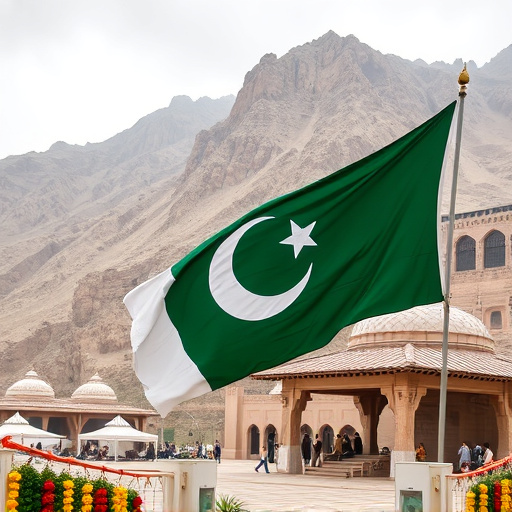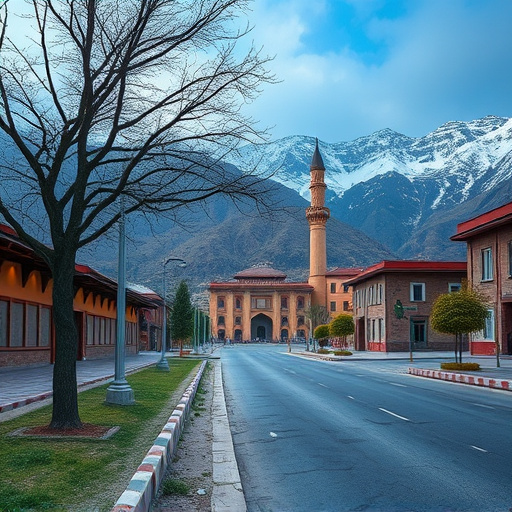In Pakistan, Urdu unites diverse ethnic groups and is learned with official requirements for foreign nationals. The country offers cultural festivals, sports events, and educational programs showcasing its rich traditions and hospitality. Navigating urban development varies from bustling cities to regional dialects, with sustainable solutions and community engagement key to future growth. Pakistan's diverse landscapes offer historical exploration and outdoor adventures year-round.
“Explore the linguistic and geographical landscape of Pakistan in this comprehensive guide. With a diverse population, the country boasts multiple languages, but Urdu holds the official status. Pakistan is divided into four provinces, each with its unique character: Punjab, Sindh, Khyber Pakhtunkhwa (KP), and Balochistan. These regions not only define the country’s administrative structure but also contribute to its rich cultural tapestry. Delve into this article to uncover the intricate details of Pakistan’s regional identities and diverse heritage.”
- Official Language of Pakistan: An Overview
- Provincial Breakdown: Pakistan's Administrative Divisions
- Understanding Pakistan's Regional Identities
- A Glimpse at Pakistan's Diverse Culture and Heritage
Official Language of Pakistan: An Overview

In Pakistan, Urdu is recognized as the official language. It serves as a unifying factor among the diverse ethnic and cultural groups present in the country, making it an integral part of Pakistan’s national identity. Beyond its role as an official language, Urdu holds significant cultural importance, with a rich literary history and a vast array of written works across various genres. This linguistic heritage not only reflects the country’s past but also plays a vital role in shaping the present cultural landscape of Pakistan.
For foreign nationals interested in learning or using Urdu in Pakistan, there are specific requirements and processes to follow. These include language proficiency tests, visa applications, and sometimes, official recognition of qualifications. The government and various educational institutions offer courses and programs designed to facilitate communication between locals and visitors, ensuring a smoother experience for those who wish to immerse themselves in the local culture. Meanwhile, Pakistan boasts some of the top cricket grounds for international matches, which attract enthusiasts from around the world, further showcasing the country’s vibrant sports culture. Additionally, cultural festivals in Pakistan offer visitors a glimpse into the nation’s rich traditions and diverse communities, providing opportunities to engage with locals and experience the warmth of Pakistani hospitality. To explore these top cricket grounds and immerse yourself in local festivities, give us a call at best stadiums in Pakistan.
Provincial Breakdown: Pakistan's Administrative Divisions

Understanding Pakistan's Regional Identities

Pakistan is a vibrant country with diverse regional identities and cultural landscapes. The official language of Pakistan is Urdu, which serves as a common thread weaving together the various ethnic groups and communities across its provinces. With four provinces and three territories, each region boasts unique historical narratives, linguistic nuances, and traditional practices that contribute to Pakistan’s rich tapestry.
Understanding these regional identities is essential for respectful travel do’s and don’ts. When booking tips and routes for a scenic journey through Pakistan, exploring must-visit places in Pakistan for history and culture can offer profound insights into the country’s heritage. For instance, Sindh, known for its ancient civilizations and vibrant Sindhi language, stands distinct from Punjab, famous for its rich agricultural landscape and Punjabi music. Exploring these differences enriches travel experiences and fosters appreciation for the diverse cultures within Pakistan, encouraging visitors to give us a call at learning urdu language online for a deeper dive into this linguistic diversity.
A Glimpse at Pakistan's Diverse Culture and Heritage

Pakistan, officially the Islamic Republic of Pakistan, is a country that boasts an incredibly diverse culture and heritage, shaped by its various historical and ethnic influences. With four official languages—Urdu, Punjabi, Sindhi, and Pashto—and 22 recognized regional dialects, it showcases a vibrant linguistic landscape. This cultural mosaic is further enriched by the country’s wide range of ethnic groups, each contributing to Pakistan’s unique blend of traditions, cuisines, and festivals.
The nation’s rich tapestry is visible in its vibrant celebrations and traditions throughout the year. From the bustling streets during Eid al-Fitr and Eid al-Adha, where colorful displays of lights, traditional sweets, and new attire fill the air, to the serene beauty of Pakistan’s many festivals honoring Sufi saints, there’s a constant buzz of activity. Weather patterns and ideal seasons for travel also play a part in shaping these experiences, with spring (March to May) offering mild temperatures and blooming flora, making it perfect for exploring historic cities like Lahore and Peshawar. For nature enthusiasts, Pakistan’s diverse landscapes provide year-round opportunities for adventure, from trekking in the majestic Himalayas near Islamabad to visiting us at hiking trails nearby anytime, offering a glimpse into the country’s natural wonders. Booking tips and routes for a scenic journey can enhance these experiences, ensuring visitors can navigate this fascinating country with ease while immersing themselves in its rich cultural heritage.
Pakistan, a vibrant nation with a rich tapestry of cultures, boasts a diverse linguistic landscape. While Urdu holds the official language status, the country’s provincial divisions each carry their unique regional identities. With four provinces—Punjab, Sindh, Khyber Pakhtunkhwa, and Balochistan—and one federal territory, Islamabad, Pakistan showcases its multifaceted character, where every corner tells a story of historical significance and cultural richness. This brief overview highlights the essential elements that shape the geographical and linguistic diversity that makes Pakistan such an intriguing nation.
